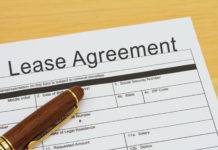The United States housing market is cooling off, but renting is on fire. Prices and mortgage rates are on the rise, making home purchases increasingly unaffordable.
Rental prices for lower-end homes are up nearly 4 percent since November 2017. High-end homes are also up, showing gains of 2.6 percent in the same 1-year period.
In fact, renting is so popular because it is more affordable than purchasing a home. Now is the perfect time to lease your California property and earn some supplemental income.
The first step is to write a comprehensive leasing agreement. This agreement sets the terms and conditions for your rental property.
Read on to learn how to write an effective leasing agreement in California. Explore everything that needs to be included to ensure a smooth landlord experience.
Call Out the Stakeholders
There should be zero ambiguity over the parties involved in the agreement. First, you should list the rental property’s address. Also, the leasing agreement should include your name and mailing address.
The following section needs to list the tenant’s information. In addition, any roommates or cohabitating family members are listed here.
Believe it or not, this section provides protection to you as the landlord. The agreement needs to prohibit unauthorized inhabitants from living in your rental property.
One strategy is to state that any co-inhabitant staying for more than 2 weeks must be added to the leasing agreement. Before entering a lease, it is customary to perform a background check on your new tenants. This condition allows you to perform due diligence on any person staying on your property for more than 2 weeks.
Leasing Terms
This is the portion of the leasing agreement that lays out the duration of the lease and the payment terms. For starters, it clearly states how much the leasing payment is.
It also says the frequency and date that the rent payment is due. For example, many landlords require the lease payment on the first of the month.
Some landlords build utility costs into the monthly payment. If this is the case, the terms and conditions should clearly state which utilities are included.
There may be fees in the event of damage or late payment. This section is a good place to outline any fees that are imposed on the tenant.
Difference Between a Rental and Leasing Agreement
The primary difference between the two agreements is the duration. In the state of California, rental agreements are month-to-month. Each month, the landlord decides whether to renew or not. Also, the landlord only needs to give 30-days’ notice to end the agreement.
On the other hand, a leasing agreement calls out a fixed duration. A 1-year lease is most common in the property rental industry. However, there are no restrictions against a longer lease if you are comfortable with the tenant.
Notice to Vacate
As a landlord, you have the right to request the tenants to vacate the property. This is achieved via a notice to vacate.
The regulations governing this process are described in the lease. One of the key components of a notice to vacate is whether the landlord has just cause.
If there is just cause, the tenant is required to move out more expeditiously. If there is no cause, the lease typically affords the tenant a 60-day notice.
Security Deposit
To enter a leasing or rental agreement, a security deposit is typically required. The amount varies by agreement, but in general, the landlord collects one or two months’ rent as a security deposit.
The agreement should identify what the security deposit is to be used for. Many landlords use it in the event that a lease payment is late or missed.
In other cases, the security deposit is used to cover maintenance or damages caused by the tenant. The agreement also needs to specify how the security deposit is returned to the tenant. The security deposit must be returned if it is not used and the tenant vacates the property.
Maintenance and Repair
This is often a tense discussion between landlord and tenant. A strong leasing agreement should clearly identify who is responsible for the maintenance and repair of the home.
At a minimum, the agreement should require the tenant to keep the house clean and sanitary. At the end of the day, the rental property is still the landlord’s asset. If the tenant destroys the home, it will lose property value and be harder to sell.
The agreement should instruct the tenant to immediately contact the landlord if they suspect an issue. In terms of the landlord’s responsibility, the agreement should define how quickly the issue is addressed.
Finally, the leasing agreement will identify any restrictions on the tenant. For example, the landlord may not want the tenant to paint a particular room in the house. In addition, the agreement may prohibit the tenant from making any physical modifications to the home.
Other Restrictions
Remember, this is your property and you need to take steps to protect it. For this reason, some landlords place conditions and consequences on bad behavior.
Consider a situation in which a tenant gets a ticket for loud or disruptive behavior. Your agreement may require the tenant to pay a fee for disorderly conduct. If clearly stated in the lease, it could also be just cause for a notice to vacate.
Also, the lease should state that any illegal behavior is grounds for termination. Many landlords place restrictions on pets living in the home.
If so, the lease should identify which pets are prohibited. Perhaps a certain size or type of pet is specifically restricted. In cases where pets are allowed, some landlords stipulate that the yard and home are kept free from fecal matter.




















